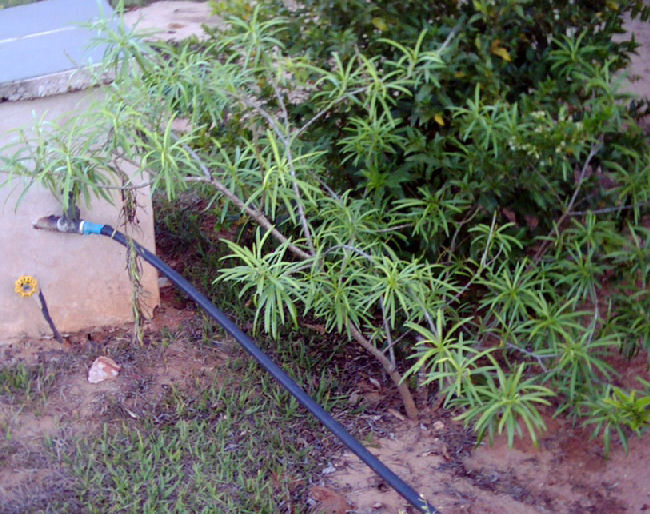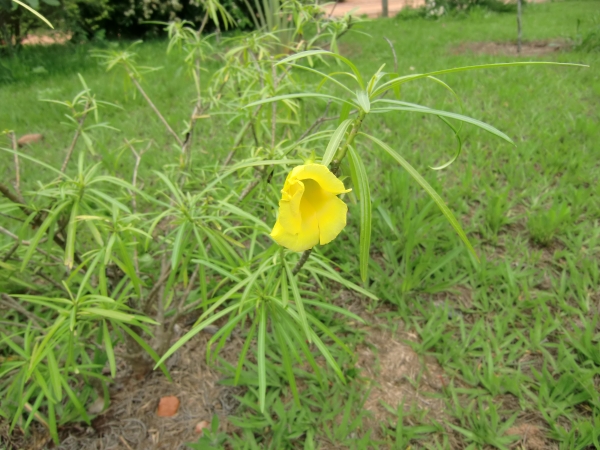

Thevetia peruviana (Yellow Oleander, Bell Tree)
The Bell Tree (Thevetia peruviana) is one species, which is belonging to the family Apocynaceae gehört. It is originally from Peru, but is now cultivated worldwide in the tropics and subtropics as an ornamental plant and has naturalized at many places. From the hard fruit skins, the Indians had once producted rattles and bells, whence the name from.
The bell tree is a highly branched, evergreen and leafy shrub or tree, which reachs heights of up to about 13 feet (wild growing up to 30 feet). The alternate leaves are arranged in long, narrow, lanceolate, glossy, medium to dark green and have a length of up to 6 inches.
The flowers are sitting singly or in clusters at the ends of the branches. The highly fragant, funnel-shaped blooms are up to 2.8 inches long. Because of its deep yellow flowers the species sometimes is referred to as yellow oleander. There are other forms or varieties with orange and whitish flowers. The fruit is green and fleshy, which is discolored to black in ripening and contains in most cases two seeds.
The latex of the plant contains the glycoside Thevetin, and all other parts of the plant are highly toxic. The latex is greatly diluted in the folk medicine used agains various diseases. It has a hypotensive effect, is intended to strengthen the heart and healing support for gastroenteritis. Pyschotropic effects are also possible. When used as in harvesting caution, since not only the seeds, but nearly all parts of the plant are highly posonous. the milky sap may be emitted can result irritation in the naked skin, so please wear glowes when working with the plant, including safety glasses is recommended, as the sap can be dangerous for the eyes. In Brazil, the wood was used for fishing, where the fish were stunned by the leaking poison. the flowers of the bell tree are often used for Hindu victims.
We have one plant in the front garden.

Yellow oleander in our garden in February 2009.

Flower of the yellow oleander in December 2009.
Back to the Ornamental Plant List
Updated by Joachim Jaeck on March 10th, 2010